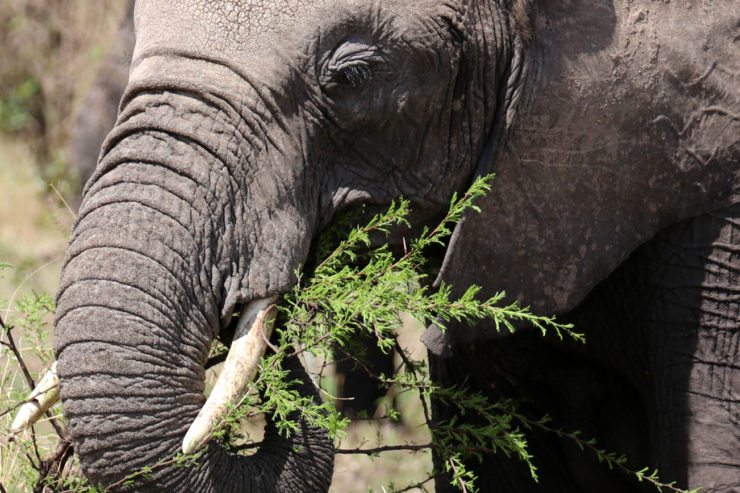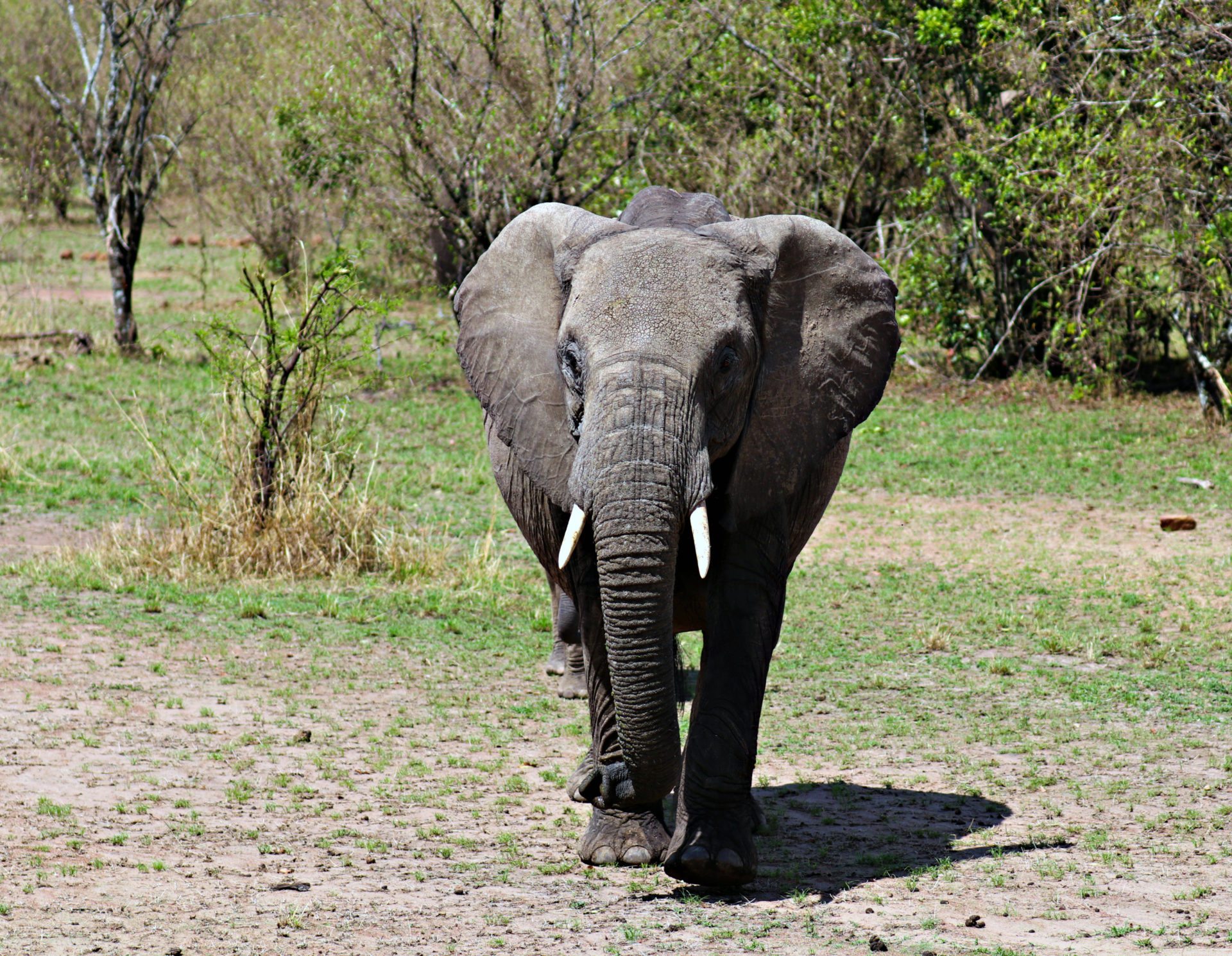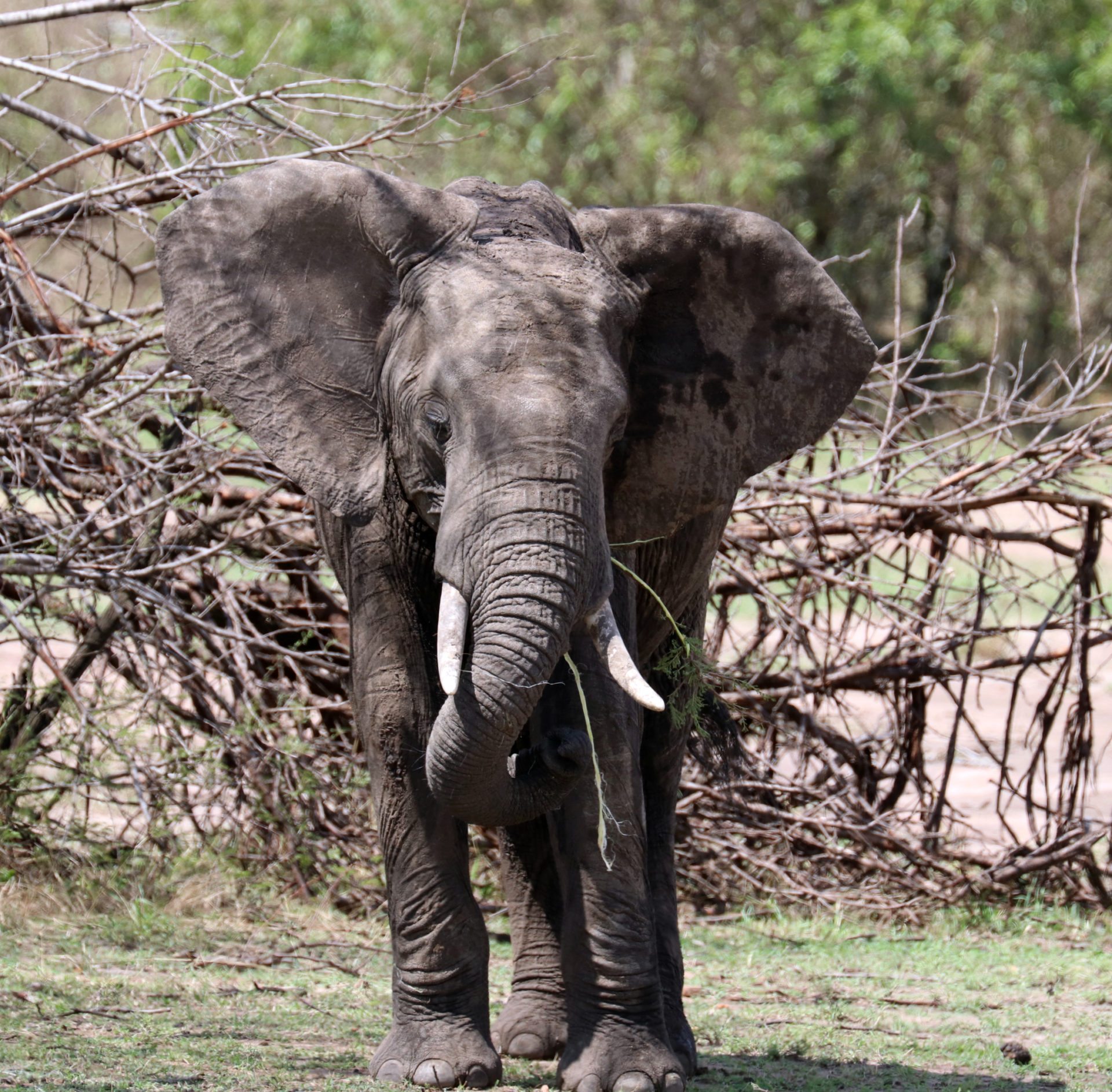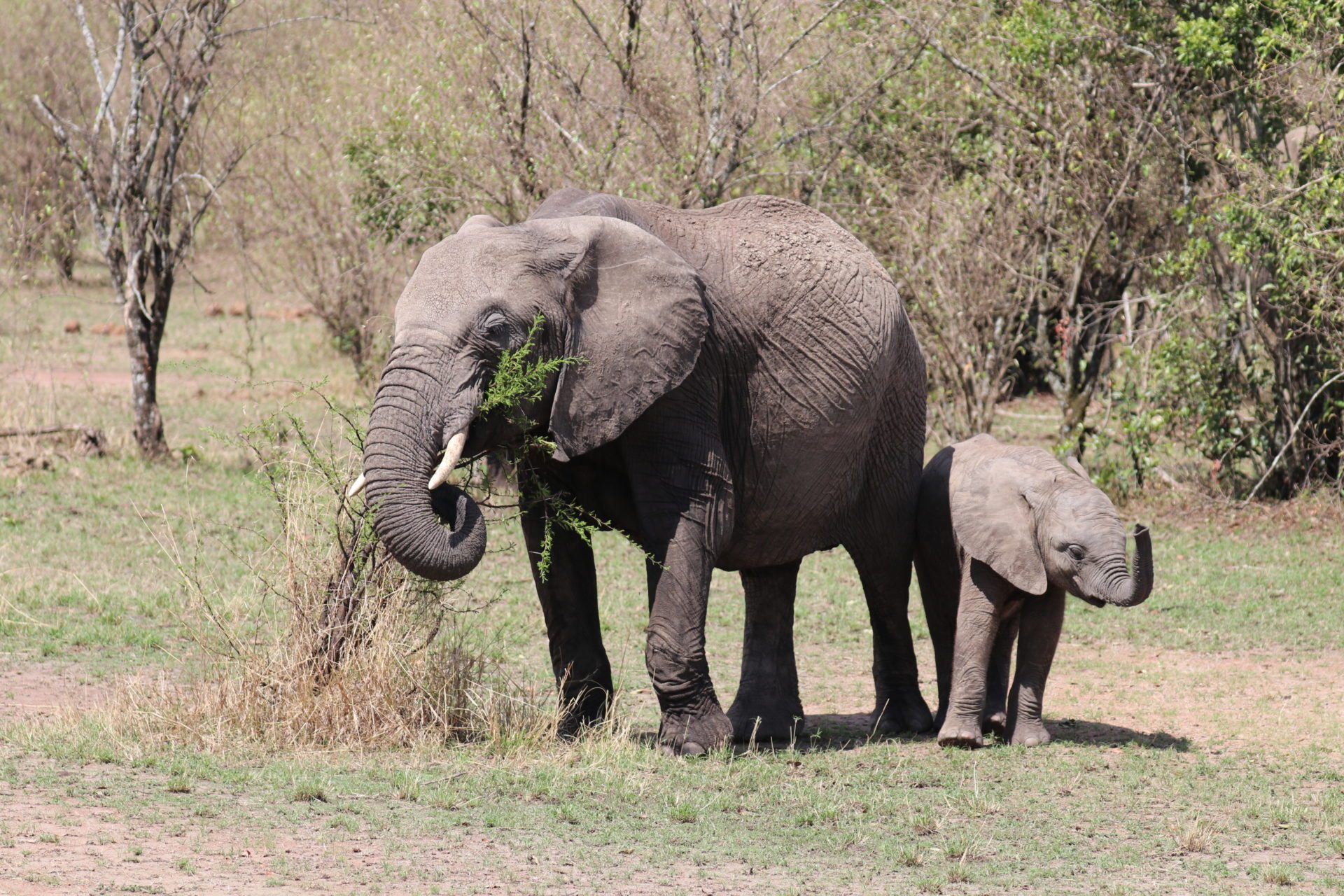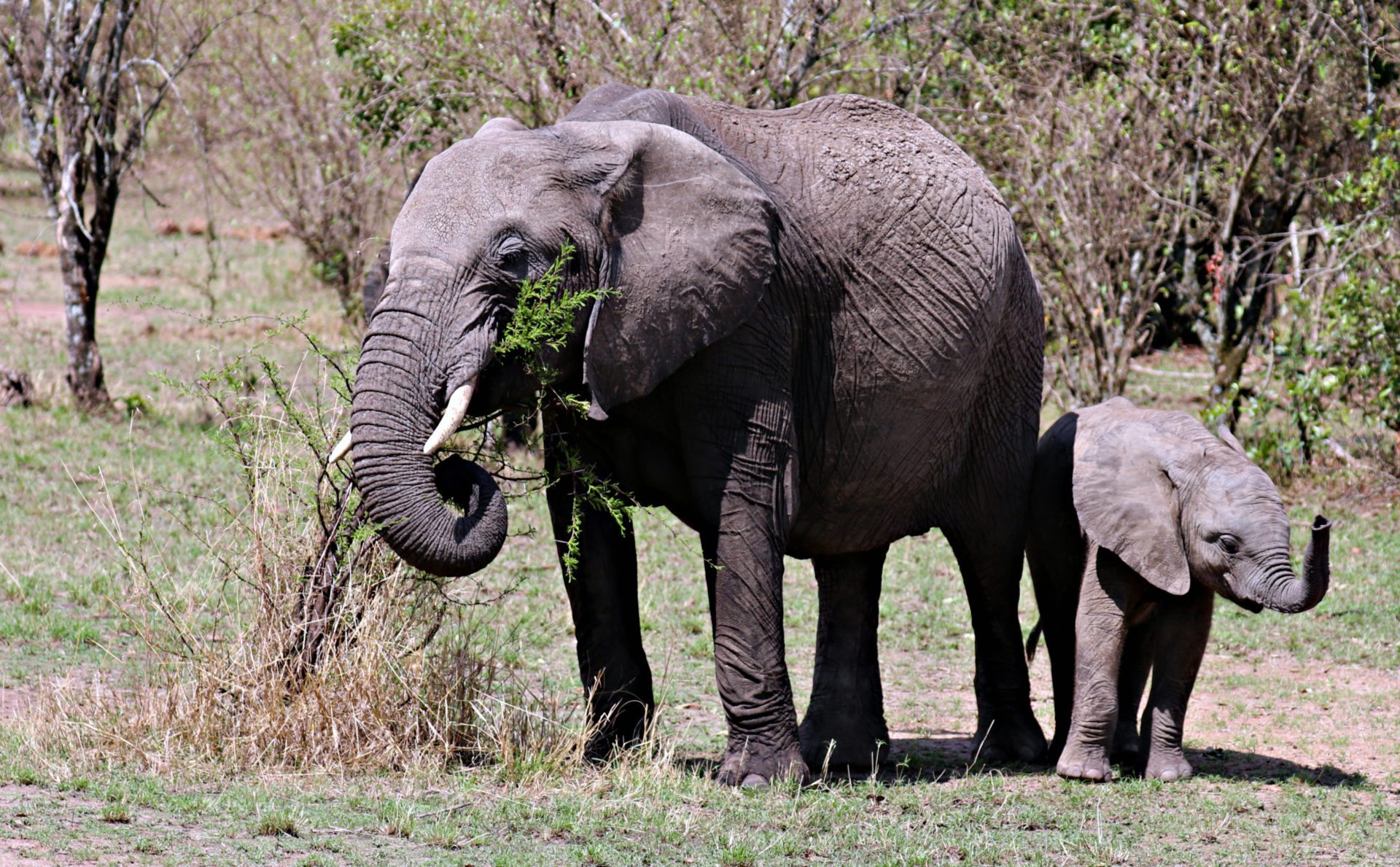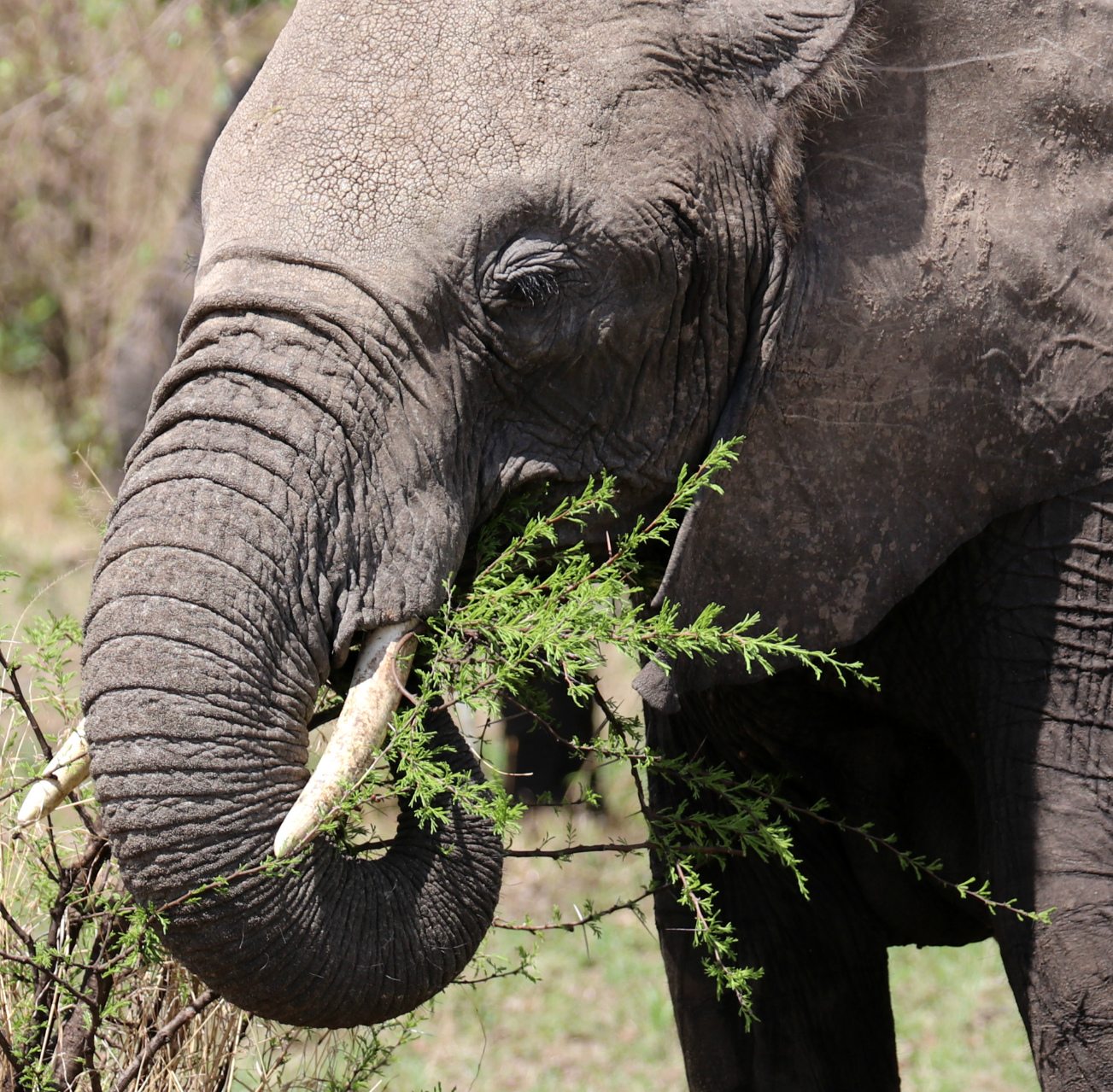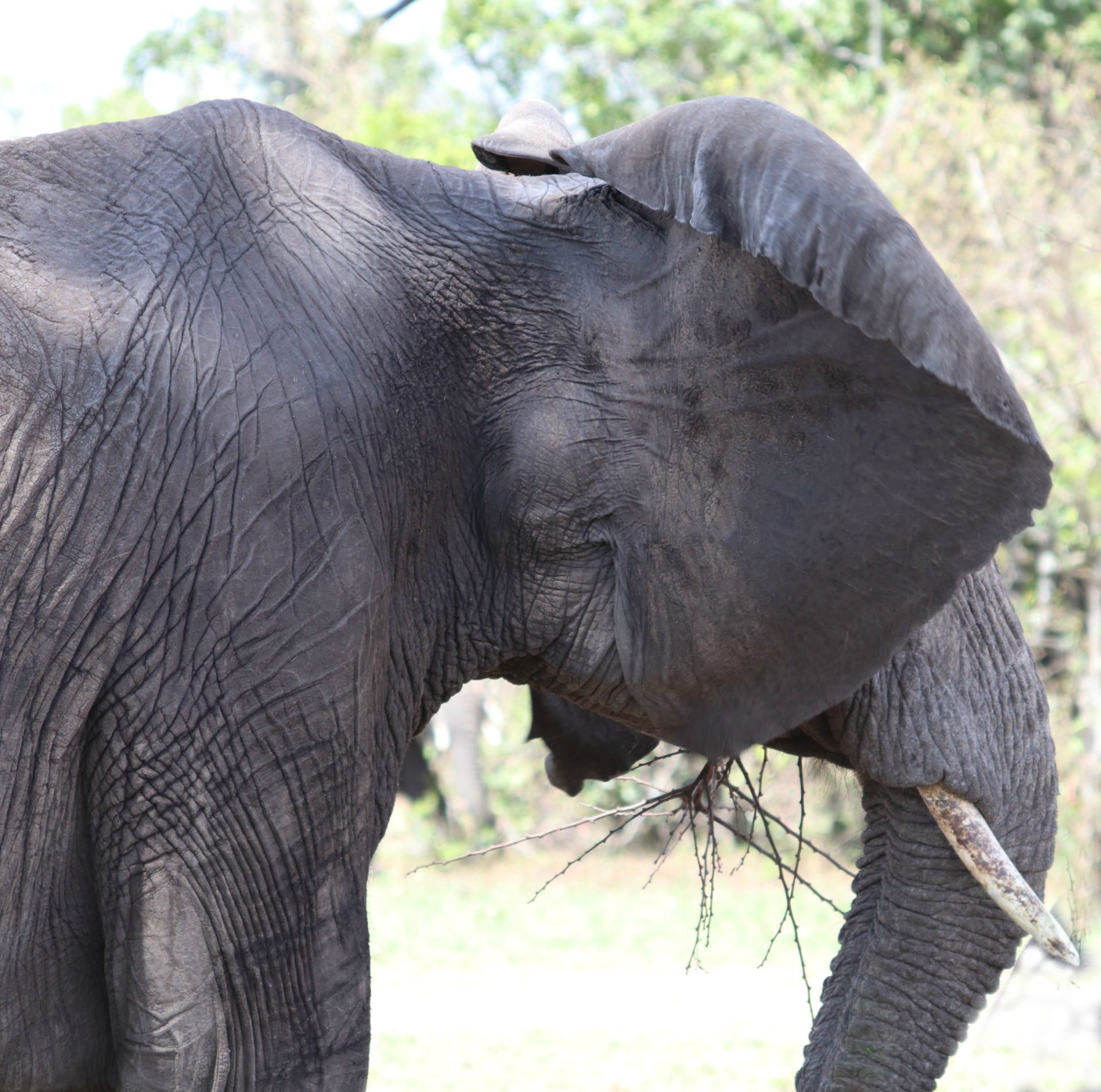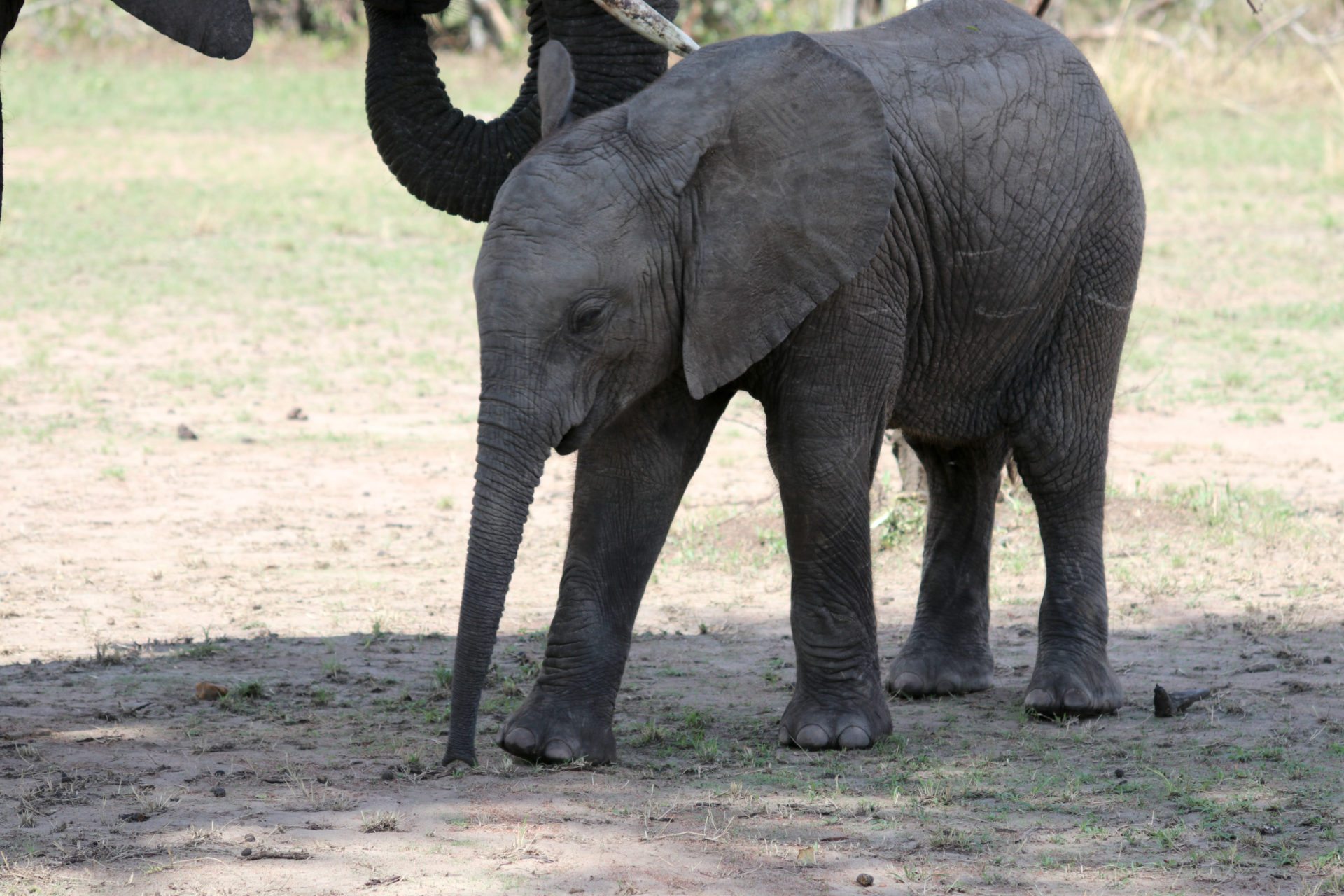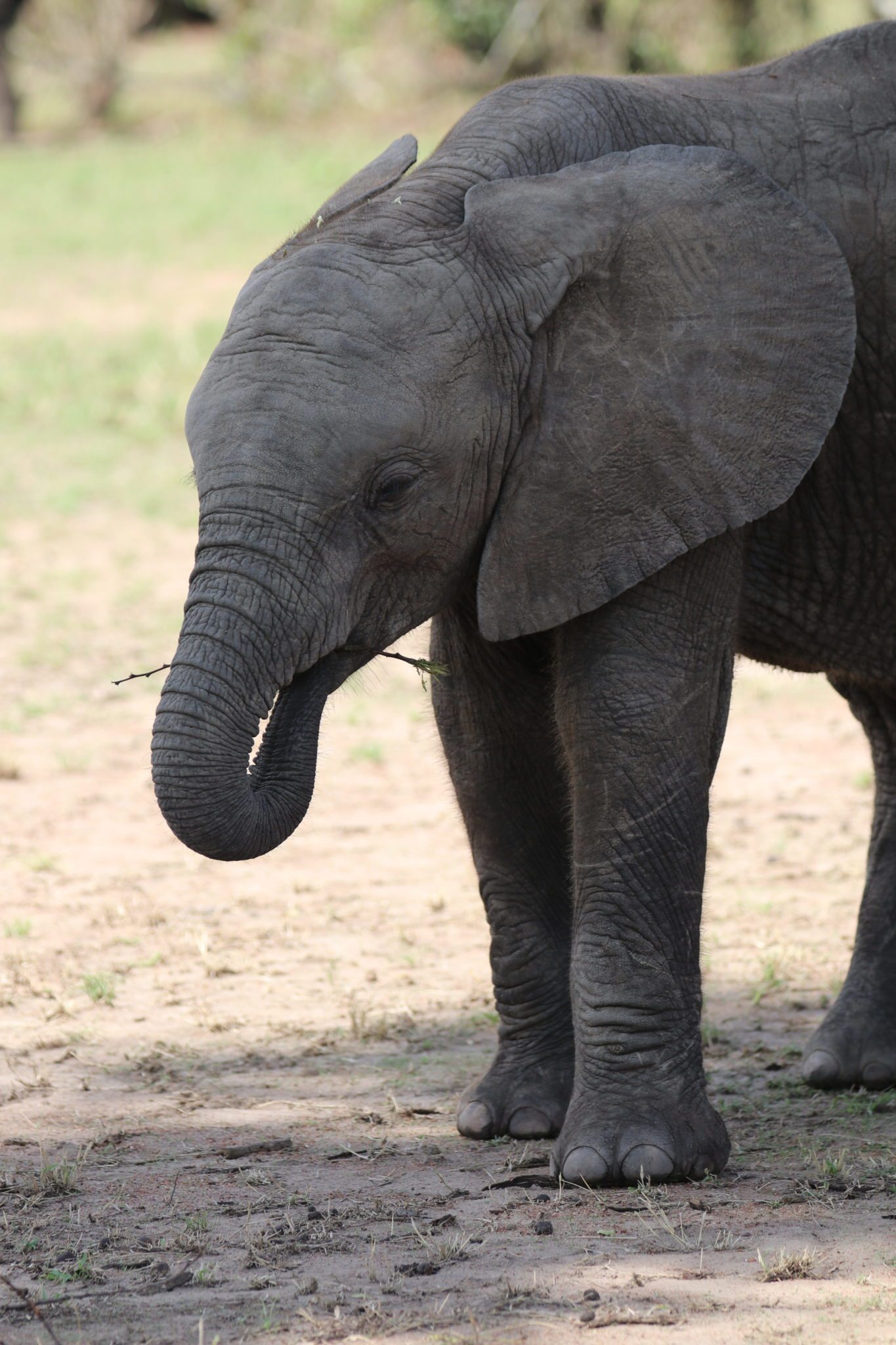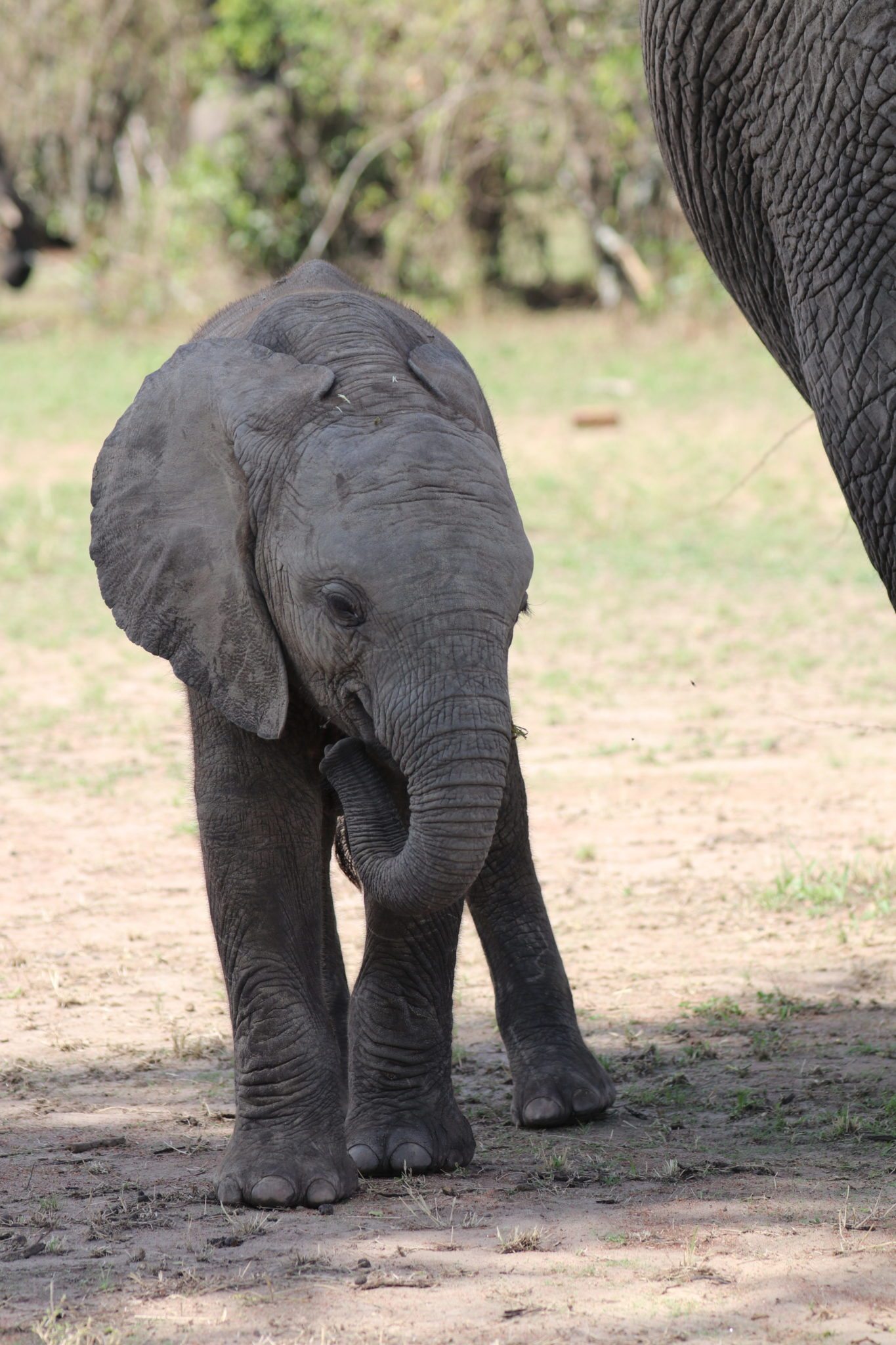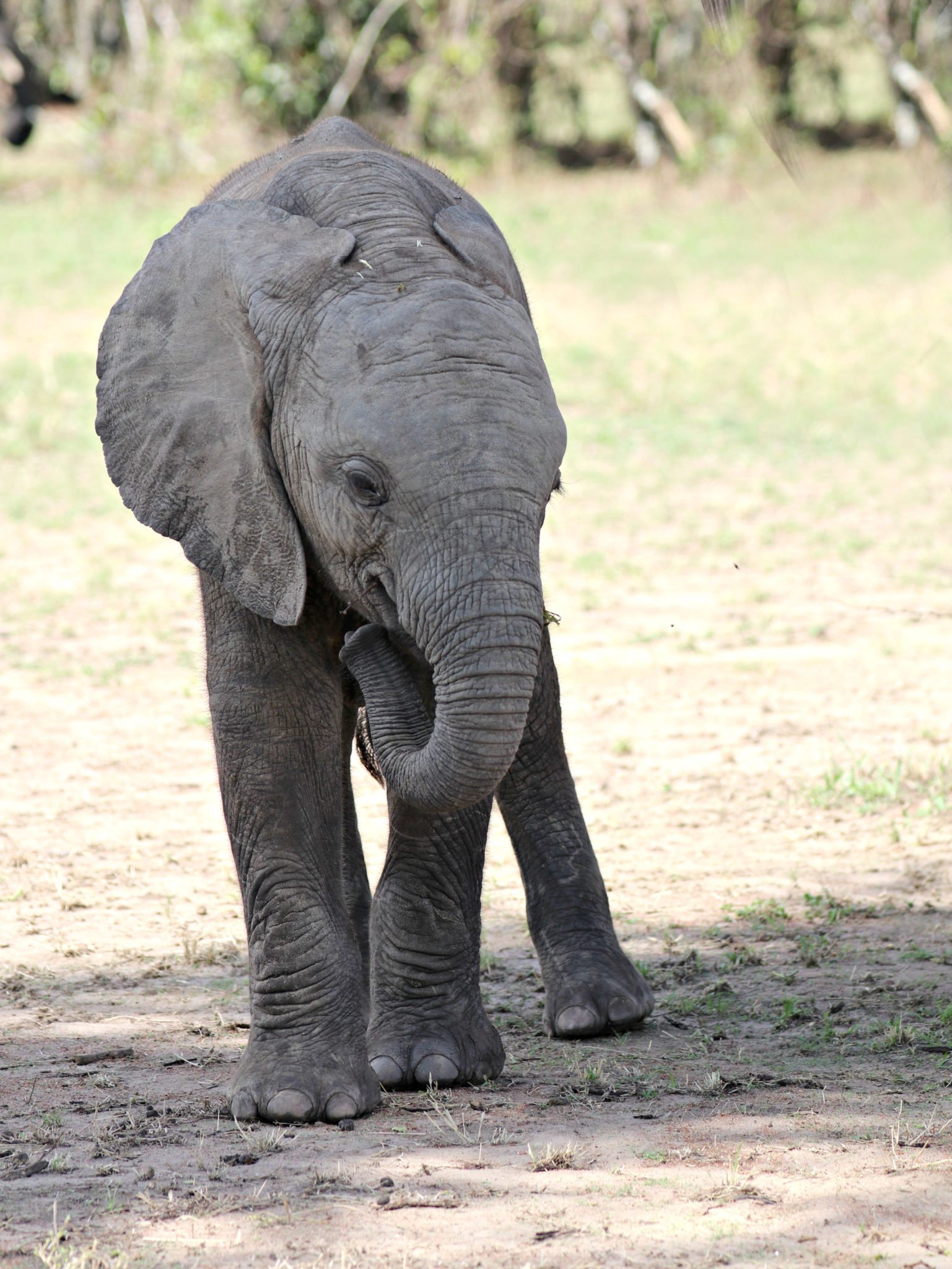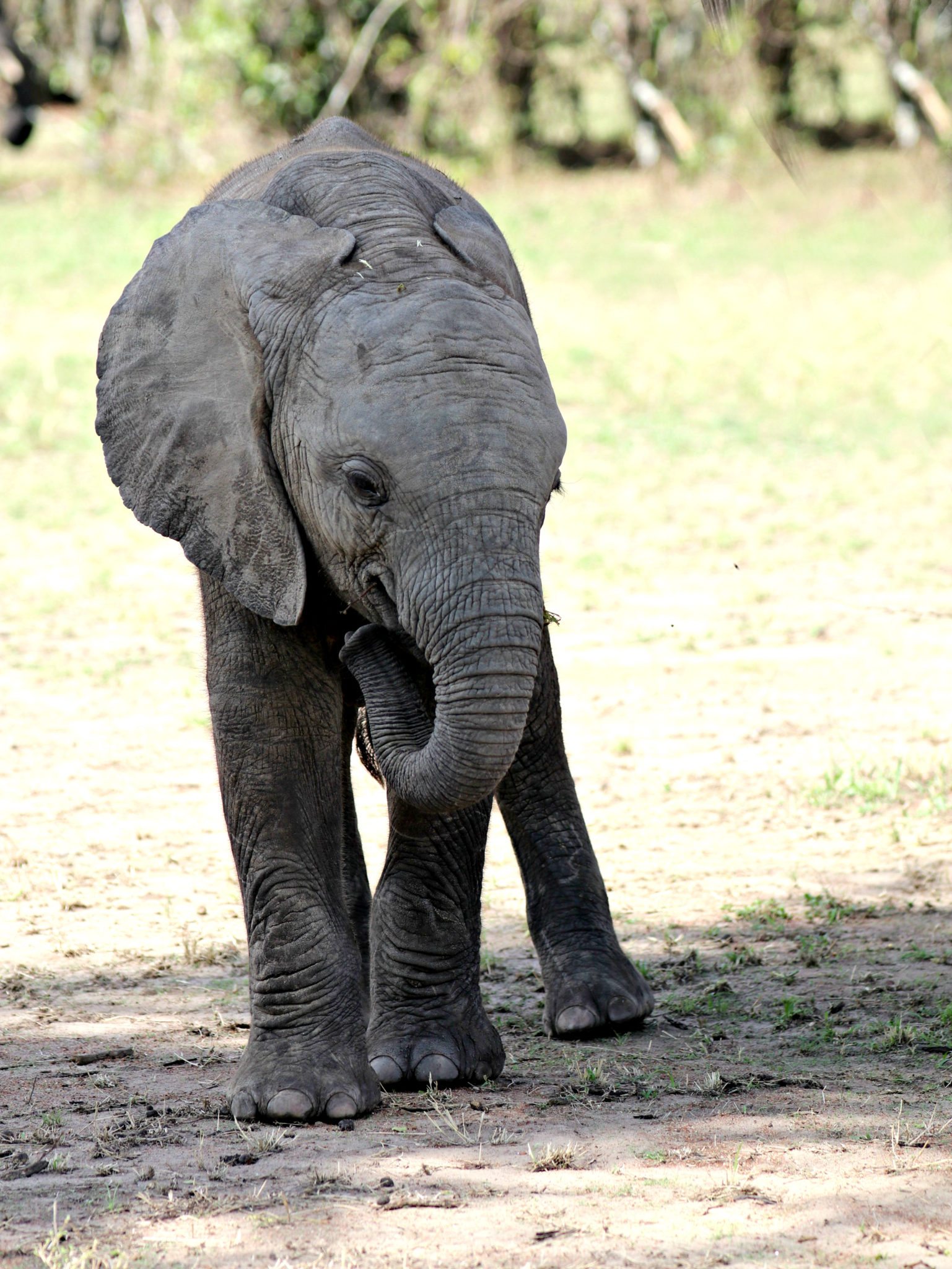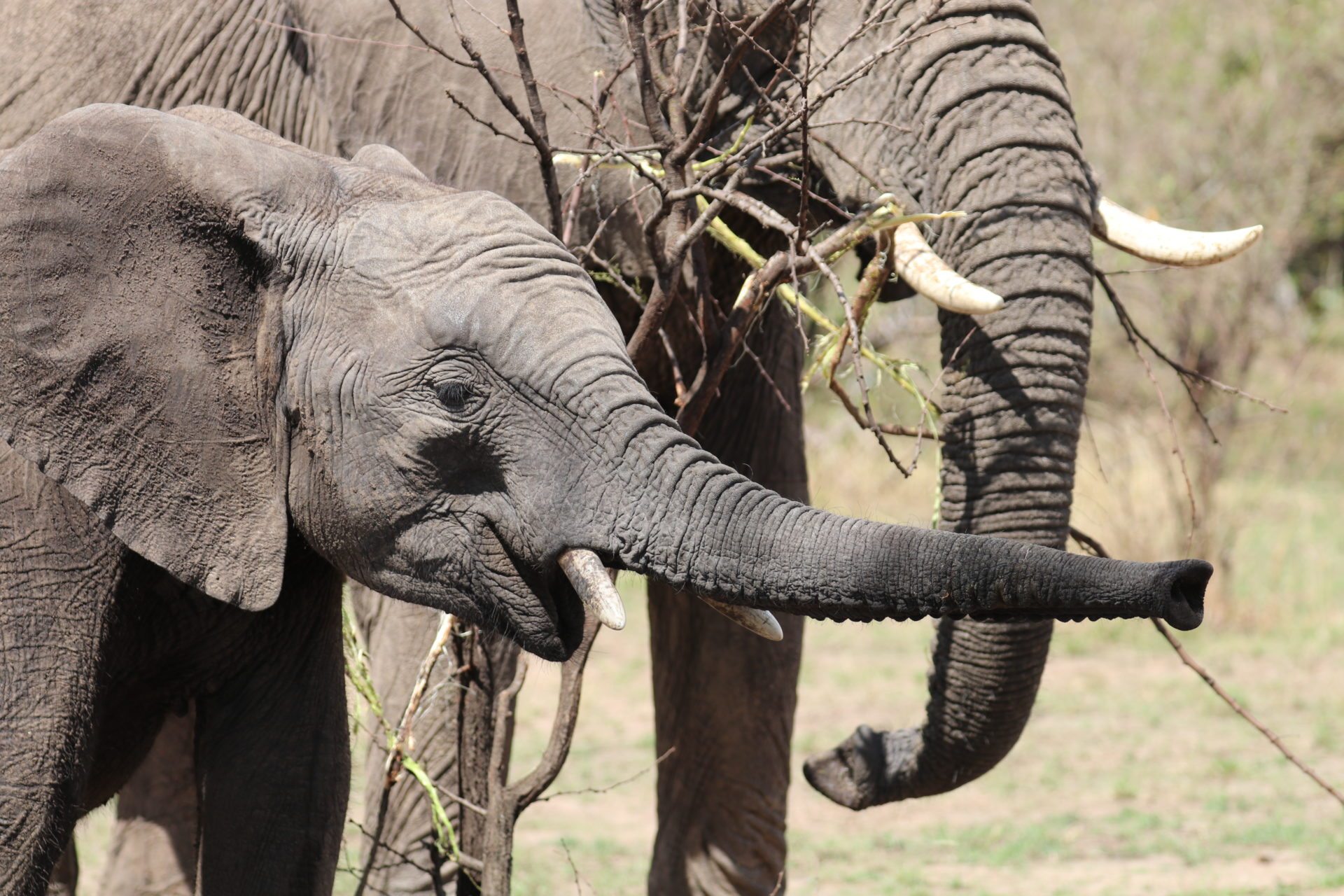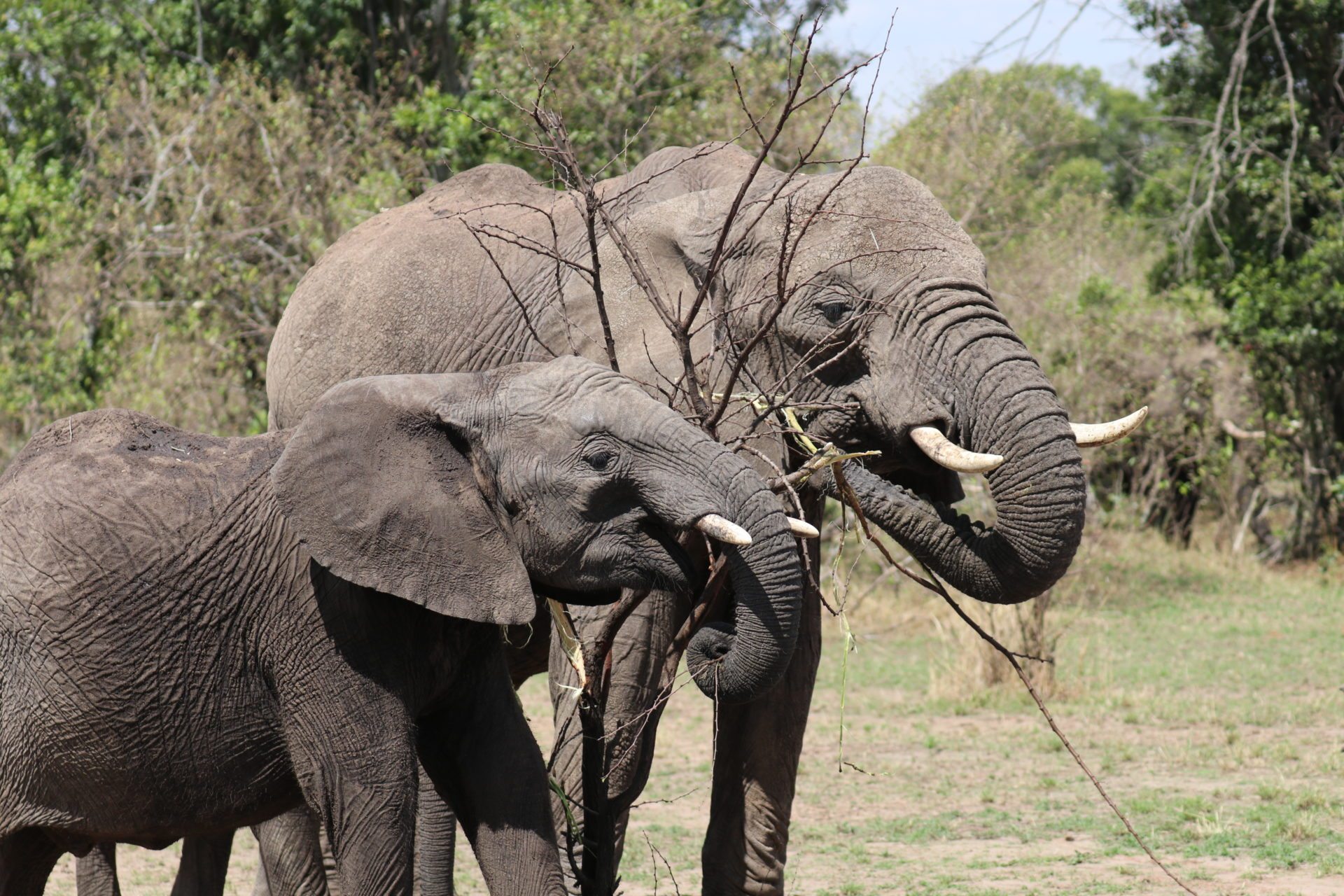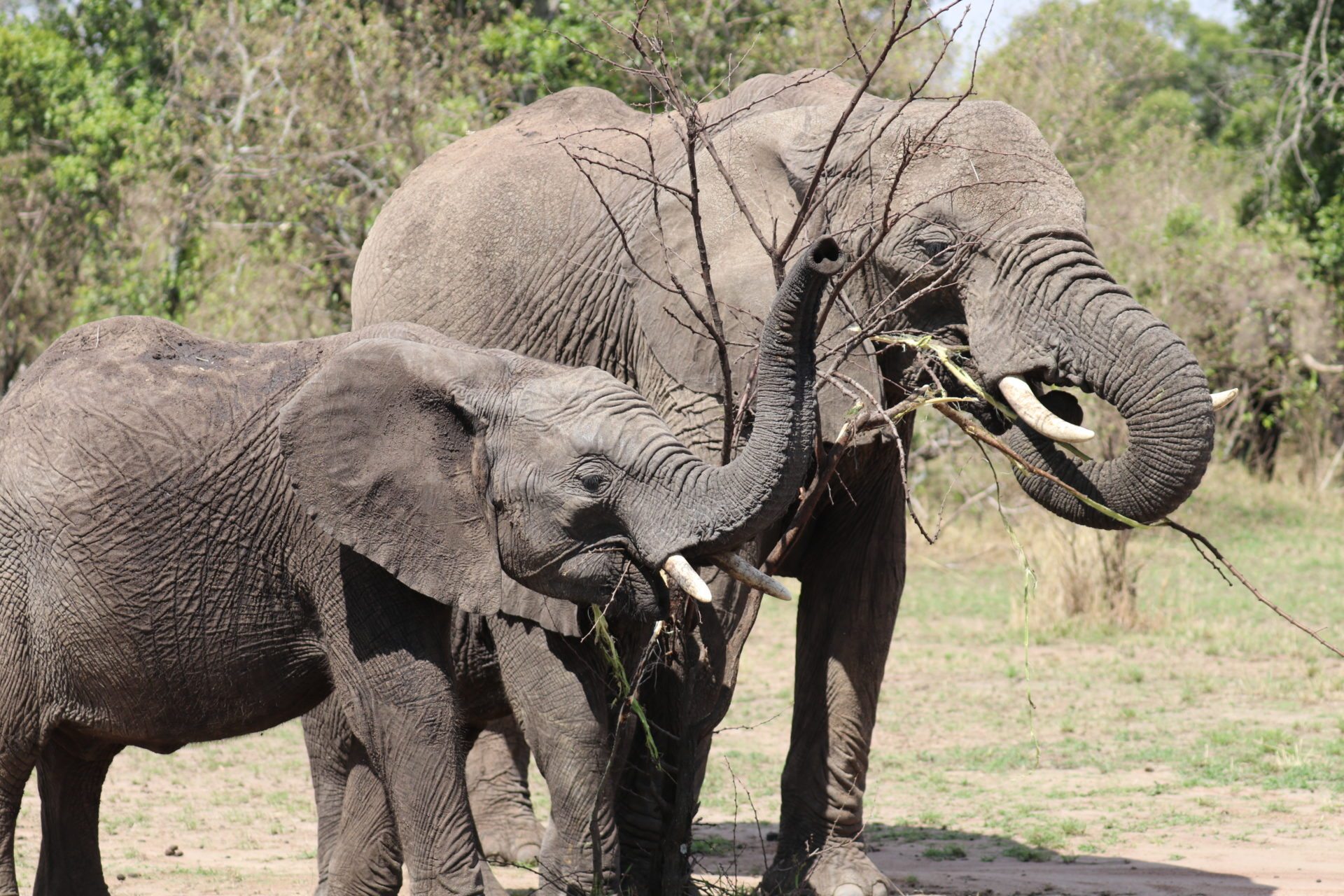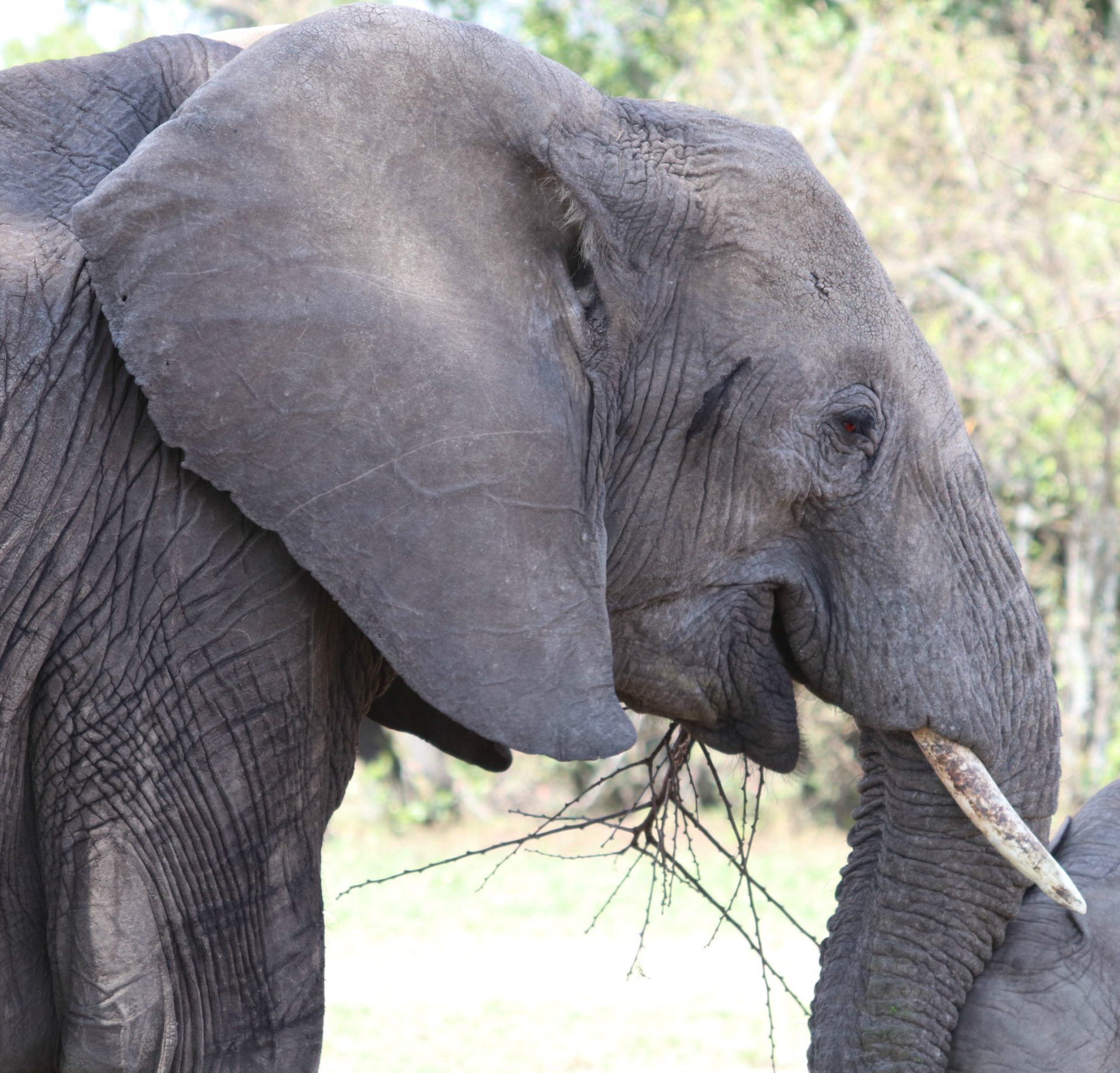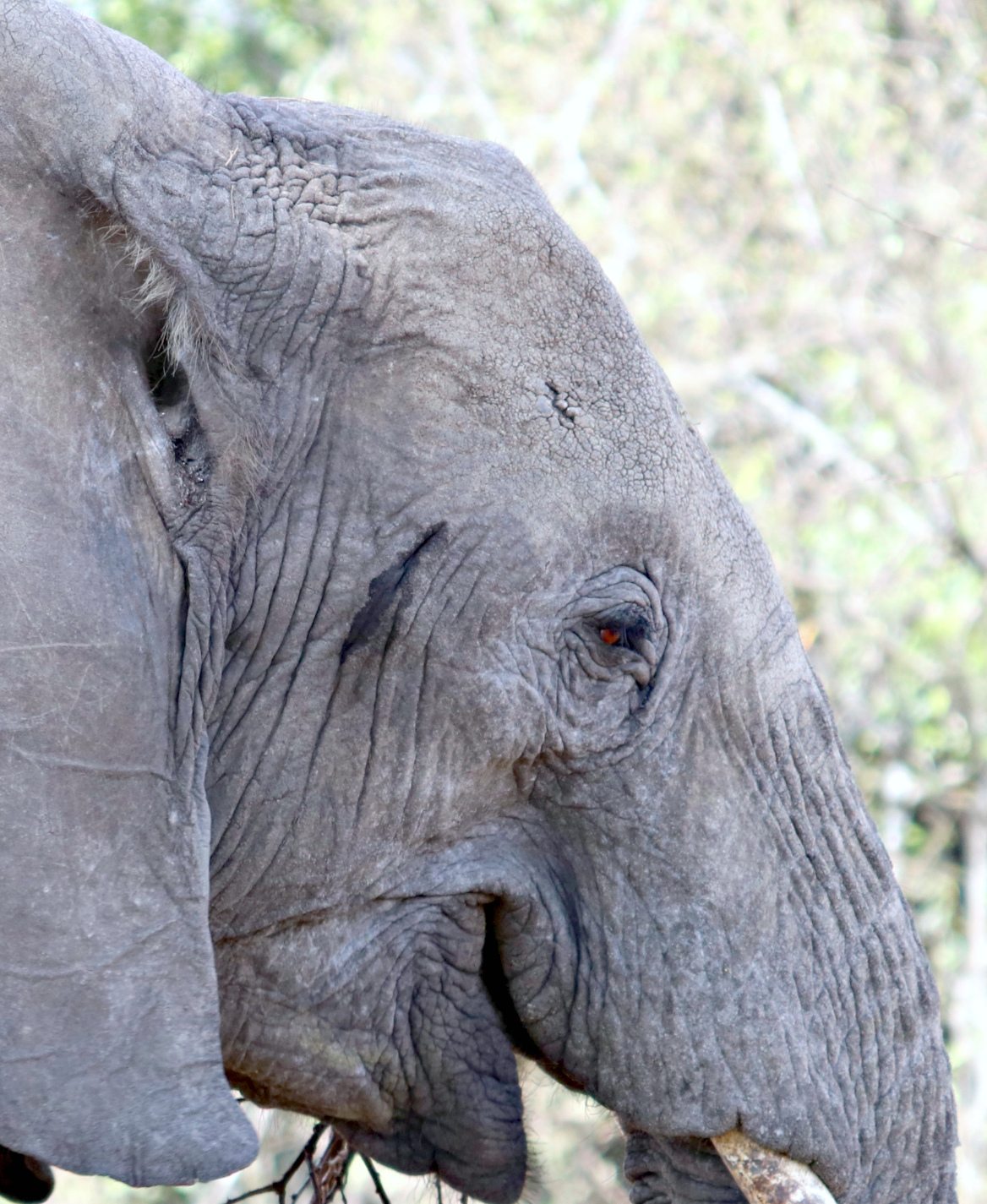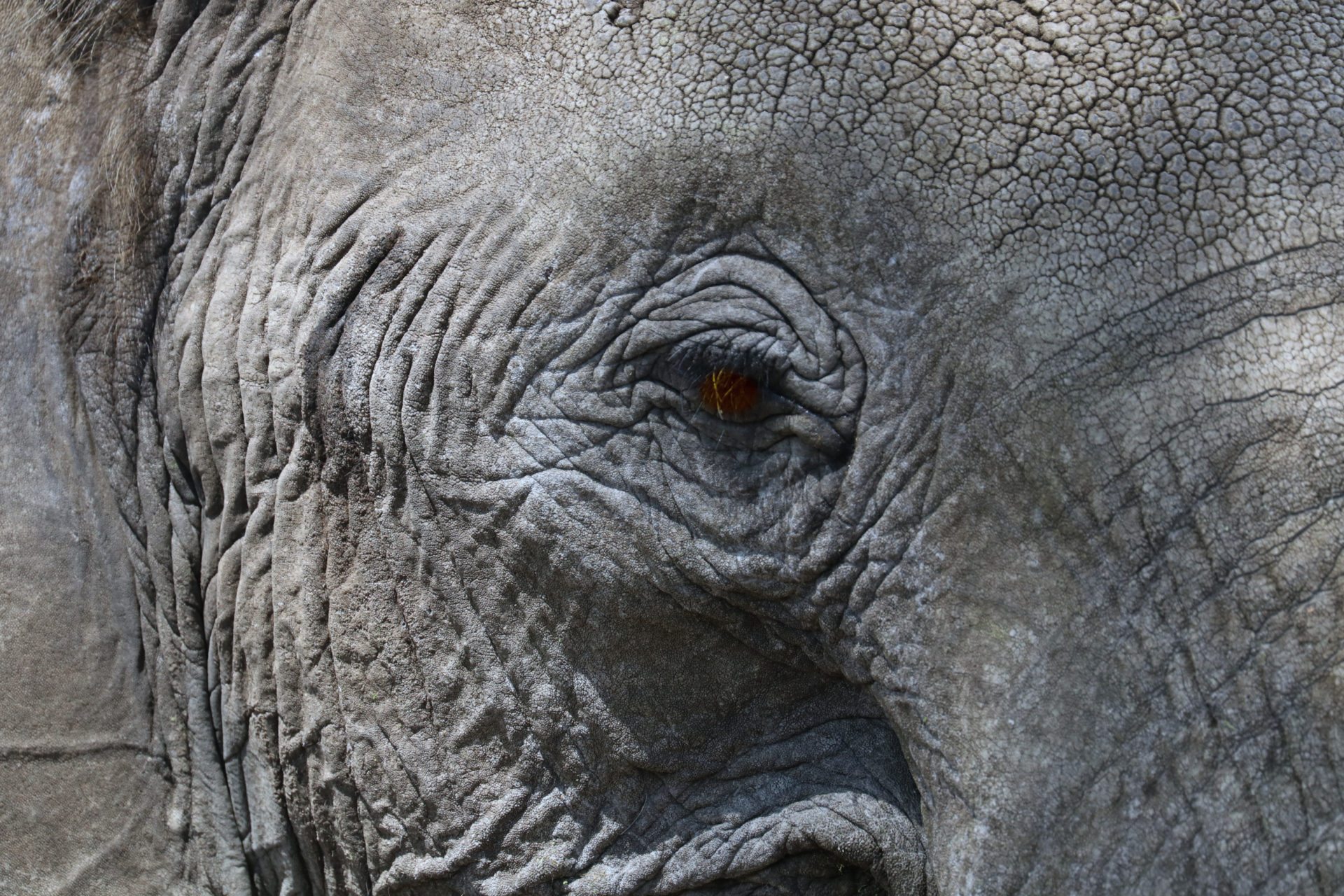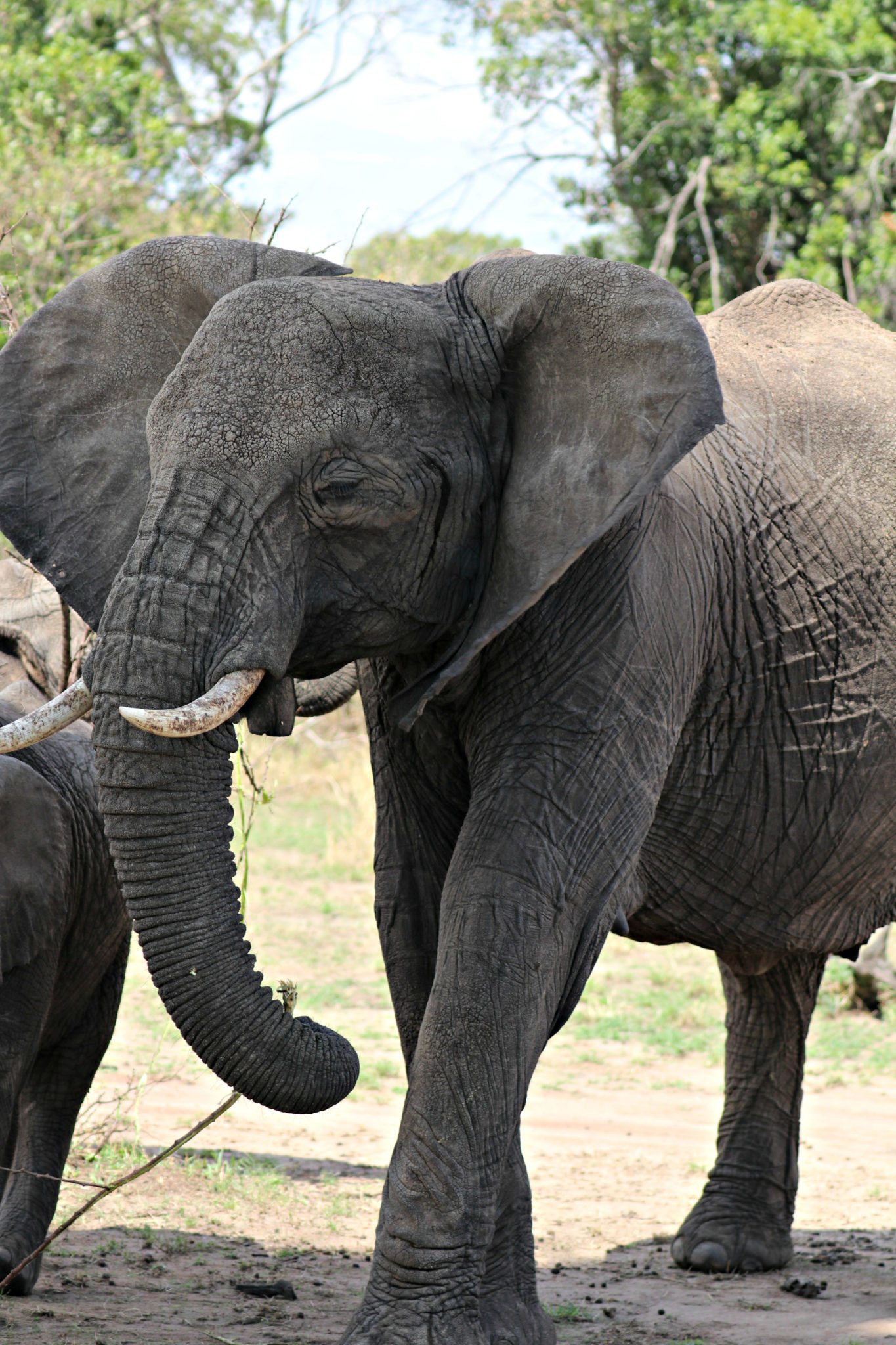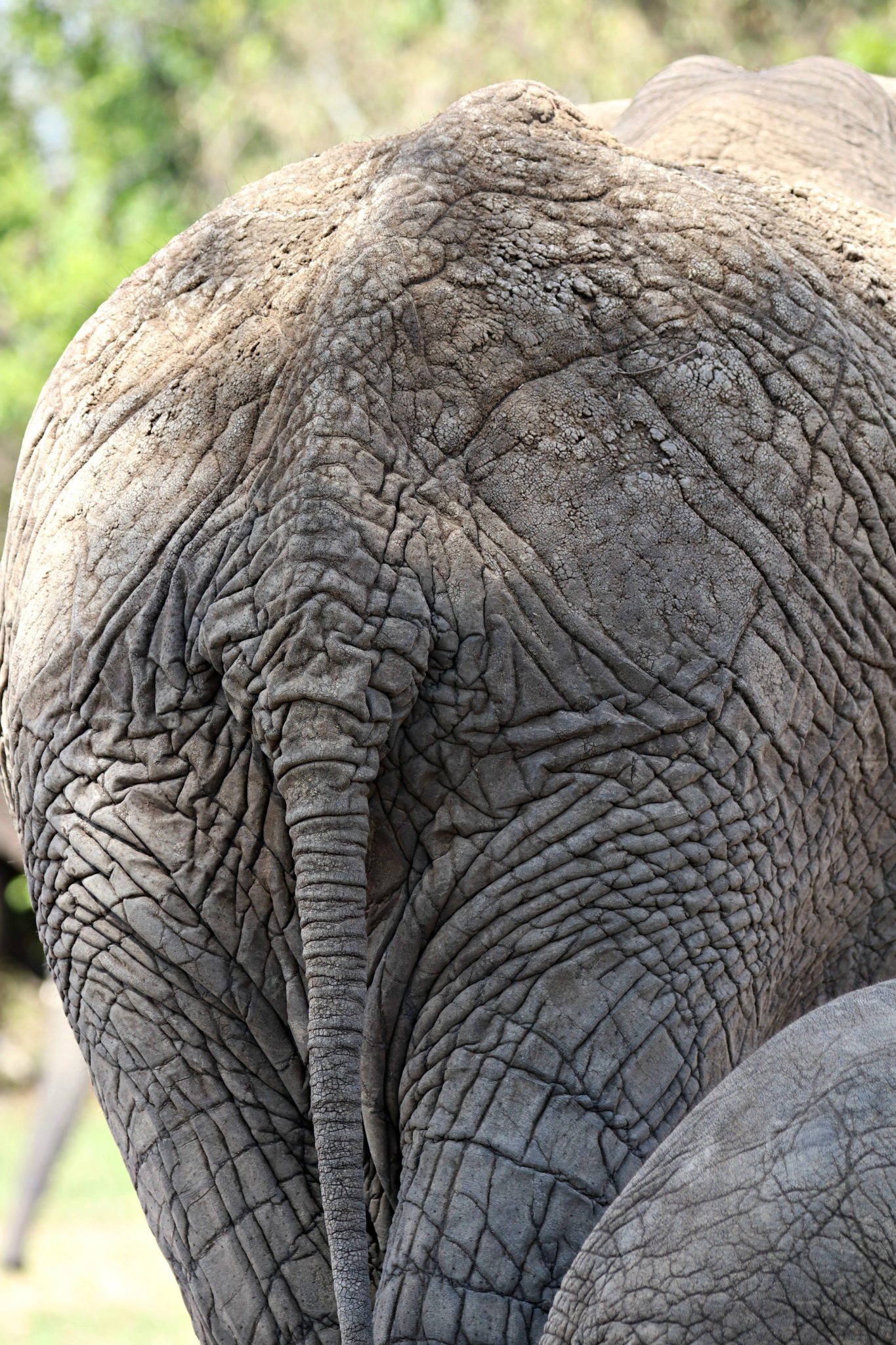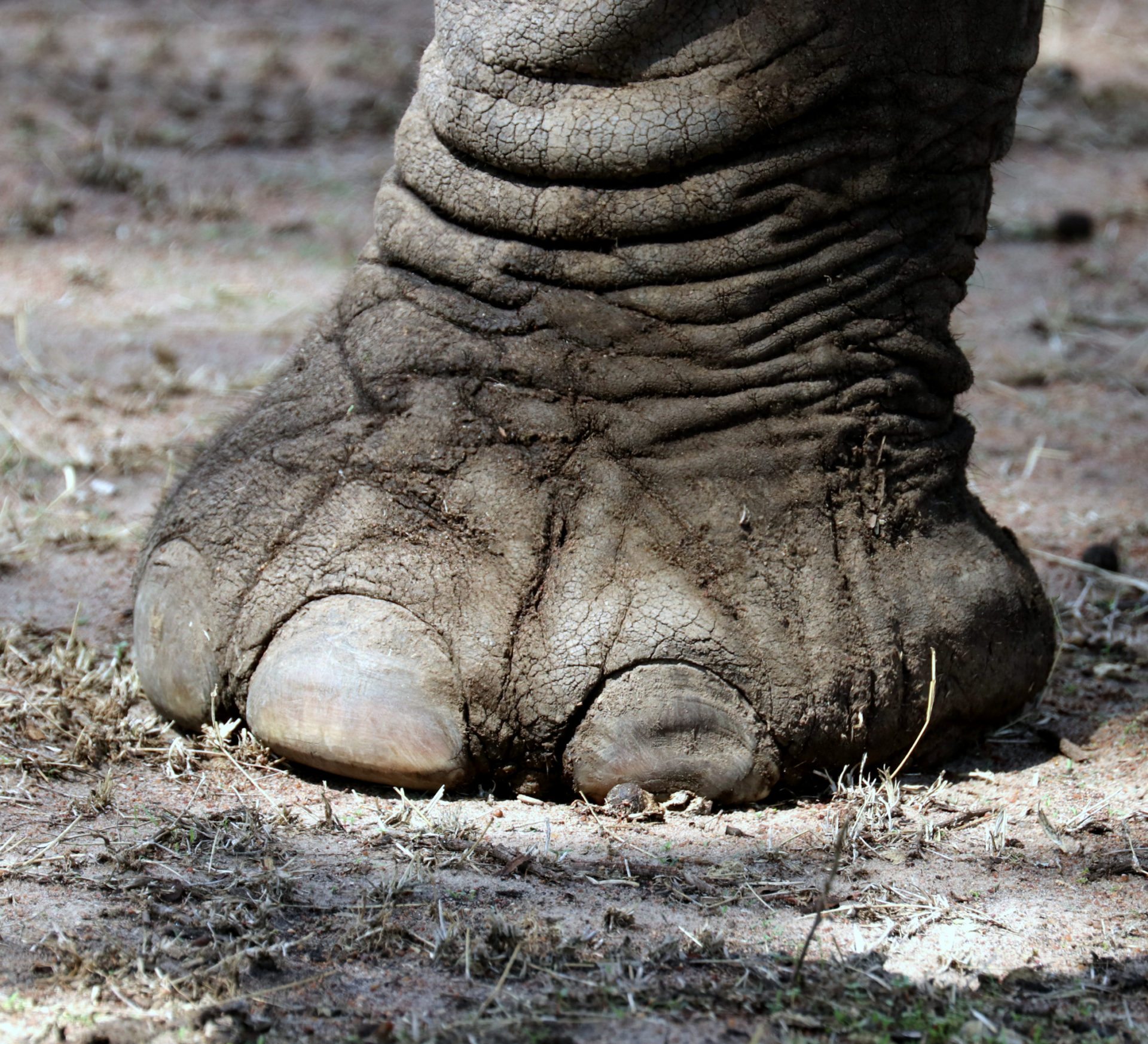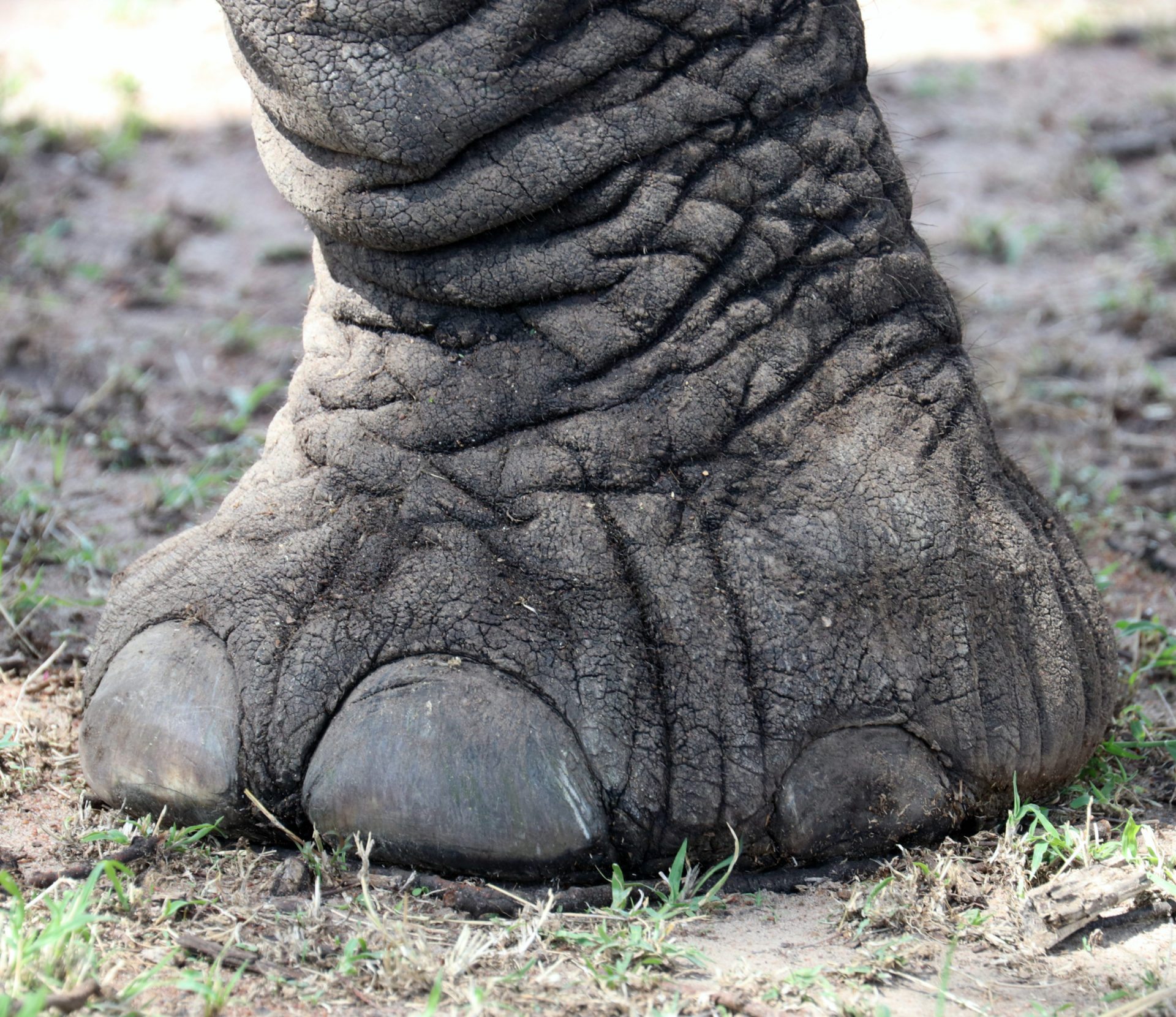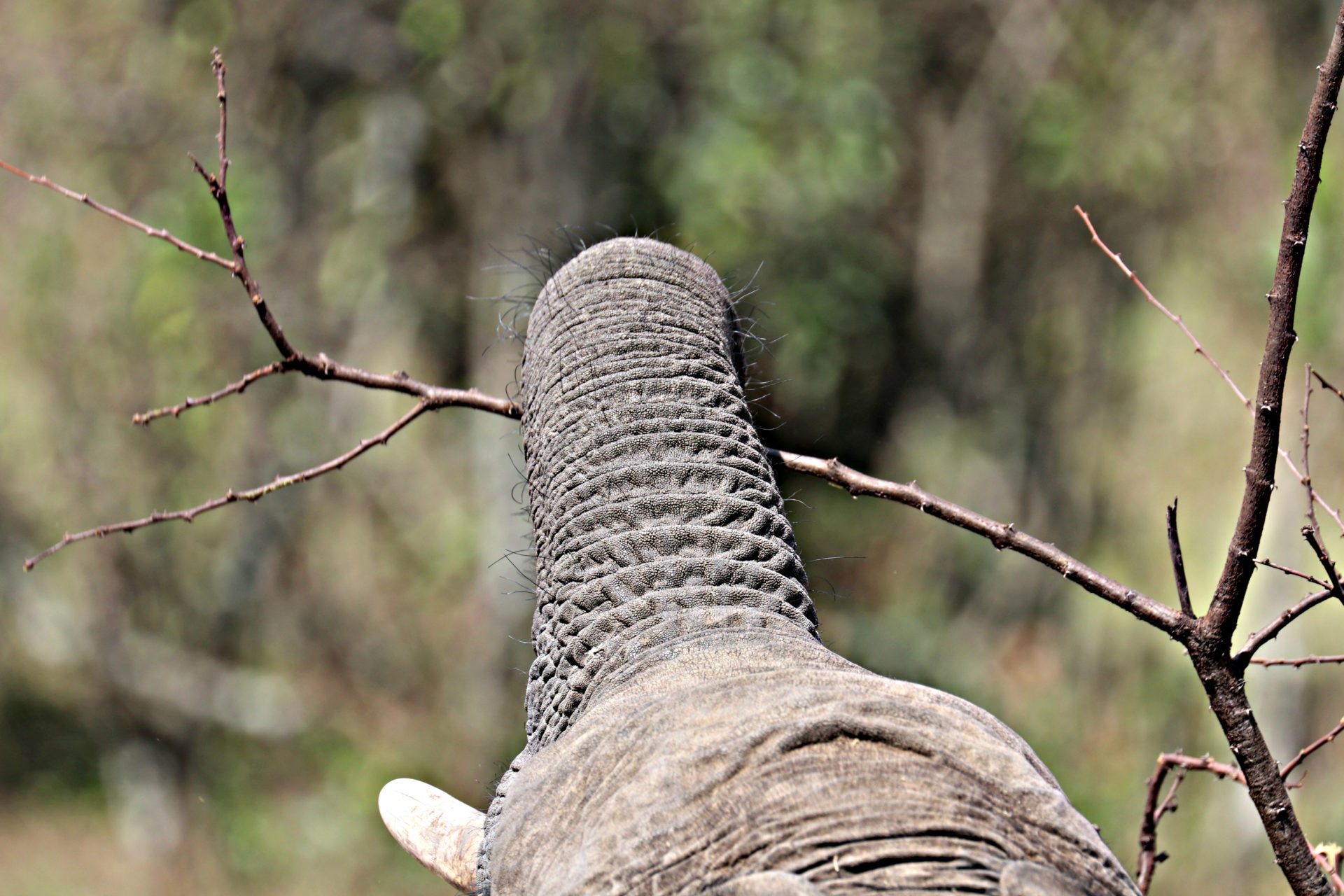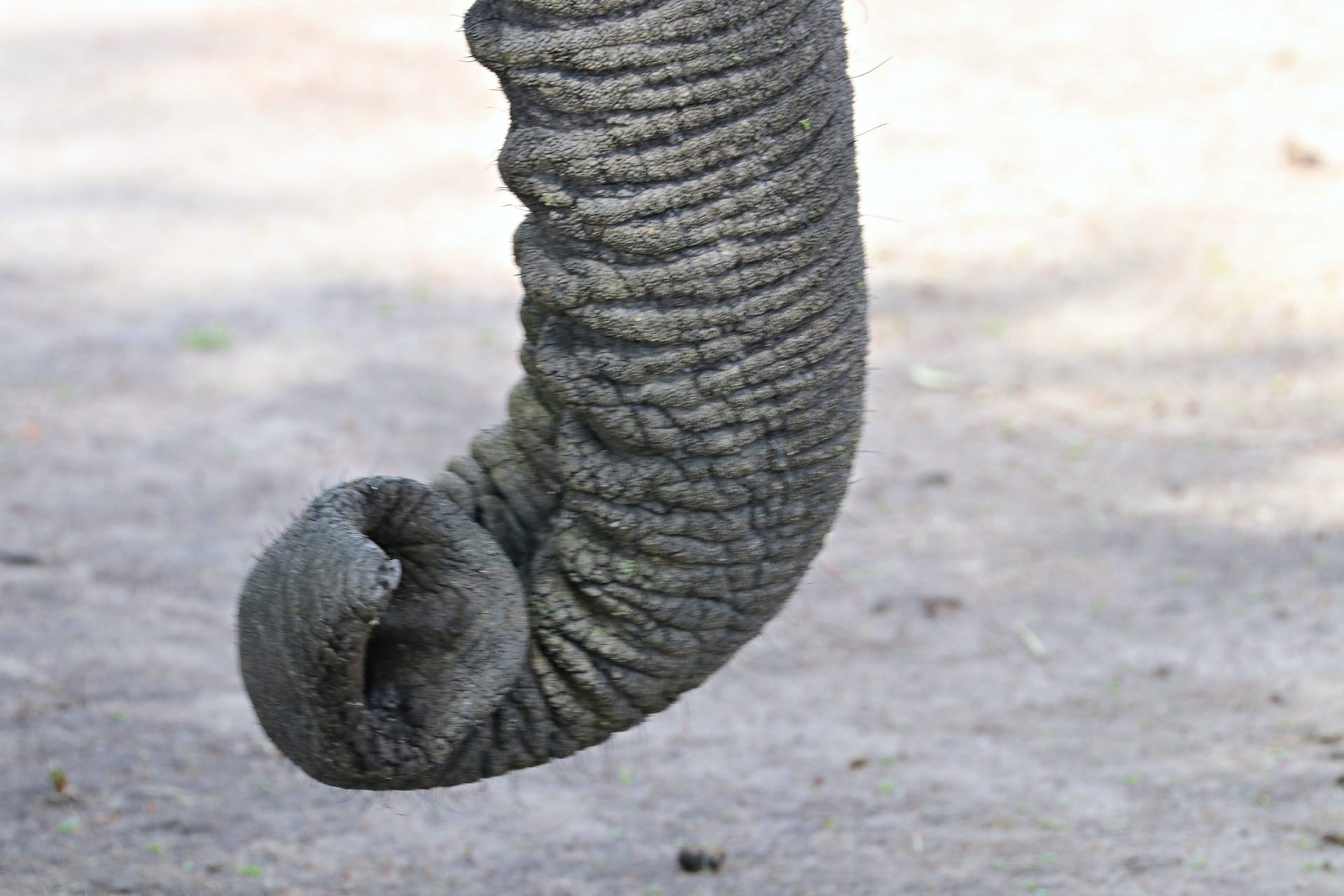After a morning crossing, we went back to the camp and picked up Allan and Clifton, hoping we would be lucky in the afternoon. We were! We saw an amazing crossing. Miles and miles of wildebeest. We also saw a wildebeest snatched by a crocodile. The croc had him by the leg. He put up a good fight, but in the end lost. Michael told us that he would not have survived had he managed to escape the jaws of the croc. His leg would have been too injured.
We took our time returning to camp. We spotted a baby giraffe and a herd of elephants. We spent the better part of an hour watching a herd of elephants with calves. As we were driving by a crop of trees the elephants started to emerge one by one from their shaded area. It was time for dinner! As we sat and watched the elephants they used their tusks to scrape the bark off of trees. They would also wrap their trunks around the branches of a tree and pull off the leaves to eat. Our guide told us that if the leaves were too high, they would push the tree over. An adult elephant can eat about 300 pounds of food a day. Another interesting fact is that elephants are wither right or left tusked, therefore one of their tusks may be smaller. There are over 2000 elephants in the Serengeti National Park.
According to the WWF, the population of African elephants, the largest land animals on earth, have been severely declining depleted during the 20th century. Poachers kill between 20,000 and 30,000 African elephants each year for their tusks, primarily to satisfy the demand for ivory products in Asia, where China is a key part of this trade. The epidemic threatens Asian elephants as well, but on a smaller scale.
Now that two of the world’s largest domestic ivory markets—the US and China—have shown great leadership in taking significant stands towards elephant conservation, it is WWF’s hope that other consumer markets follow suit. China will ban ivory trade by 2017.

